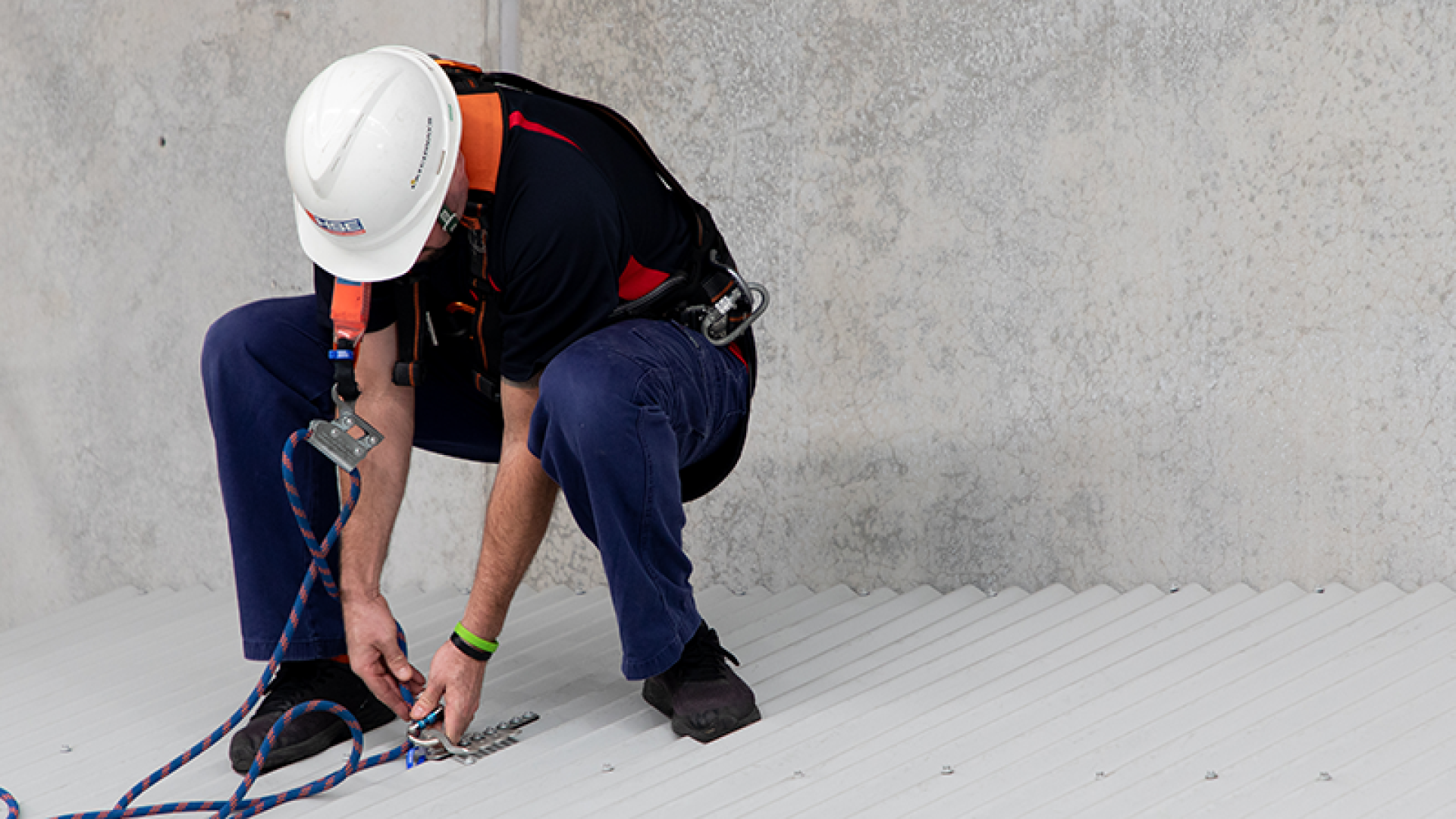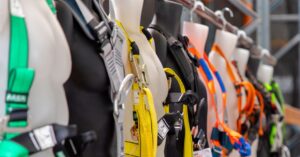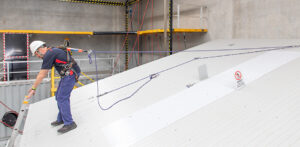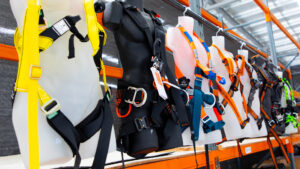When undertaking work at heights people can be protected by two different types of system, fall arrest and fall restraint. These are their differences.
We have previously discussed the different types of systems that can be used to gain access to a working at heights area, but what about the systems that protect workers once they are up there? How are workers protected against the risks of injuries that result from a fall from height?
While there are many different types of fall protection, height safety or work positioning systems out there – anchor points, static lines, guardrails, self-retracting lifelines and more – any system that is used by a worker generally falls into one of two categories.
There are systems that operate using fall restraint technique or systems that operate using fall arrest.
What is fall restraint?
The most basic description of a fall restraint system is one that does not allow a worker to place themselves in a position where a fall from height is possible. As long as the system is properly designed, installed and being used correctly.
Fall restraint systems can take on many forms. The most effective is often some sort of physical barrier that is placed between the area where work is being undertaken and the edge where a fall is likely to occur. These barriers could be temporary or fixed guard rail, or the building’s parapet.
Personal protective equipment (PPE) can also be utilised as part of a fall restraint system. On a system comprised of roof anchor points, a worker using an adjustable rope line can keep themselves in fall restraint with correct technique.
In most working at heights situations, a protection system that keeps workers in fall restraint is generally considered best practice. Being in fall restraint means that the worker is removed from the risk of a fall, which removes the risk of injuries that can occur as a result of one occurring.
Working in fall arrest
Working in fall arrest means that while the risk of a fall remains possible, should one occur the system will deploy to minimise the distance of the fall, which also minimises the risk of serious injury to the worker.
Fall arrest systems are used in situations where it may not be possible to work while staying in fall restraint. There are several common scenarios where this occurs including transferring from a ladder to roof using a first-man up (or strop) cable and when using fixed-length lanyards and type 2 fall arrest devices.
While these systems will not stop a worker from falling, they are all designed to arrest the fall within a short amount of time and in such a way that the worker does not reach the ground or other obstacle that is likely to cause injury.
It is important that PCBUs, and workers, recognise that working in fall arrest means that additional preparation prior to work may need to be undertaken. This could include having a rescue plan, which outlines the actions that need to be taken should a worker need to be recovered following a fall.
How do I know what I need?
Knowing whether you should use a fall arrest or fall restraint system depends on the solutions to a number of variables. What sort of work are you going to be doing? How often will access be required? What are the options for gaining access?
Discussing your height safety needs with the team of experts at Height Safety Engineers can assist you in providing the protection your workers need, that is not only compliant, but easy to use.





